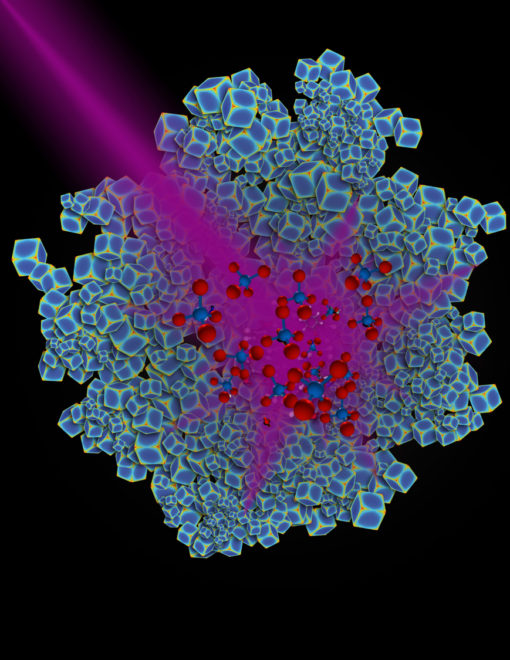
The successful use of light to influence a specific chemical reaction is undoubtedly an important goal that will also enable a better understanding of the behaviour of catalysts in general.
Catalysis is a phenomenon that allows varying the speed of a chemical reaction due to the intervention of a substance, or a mix of substances, identified by the term of catalyst.
Some time ago, the applied research started investigating the existence of a light-sensitive catalyst, able to produce a chemical reaction to transform the carbon dioxide into methane, basic element for various types of fuel, thus sharing in reducing the levels of CO2 in the atmosphere, too.
This result, at least partially, has been attained by Duke University researchers, who have developed some rhodium-based nanoparticles that show high catalytic capacity by exploiting ultraviolet light as energy source, with good prospects of process optimization also using the solar light only, target that will represent a real revolution in the context of alternative energies.
Rhodium is a rare metal mainly used as binder for platinum and palladium, to which it confers more hardness, to obtain some alloys used in thermocouples, electrodes for plugs in aeronautical engines, lab crucibles, windings for furnaces, extruders for optic fibre production; it is also used as catalyst.
Another use concerns several industrial processes, for instance to produce detergents and fertilizers but especially in automotive catalytic mufflers to reduce the emissions of toxic fumes.
Currently, the acceleration of the catalytic reactions that involve rhodium has been based on the energy supply in the form of heat but high temperatures imply some drawbacks, for instance the production of unwanted synthesis products.
Researchers have then exploited the physical phenomena of plasmonics, discipline that studies the interaction between the electromagnetic field and the free electrons in a metal that, excited by the electric component of light, start oscillating.
In other words, nanoparticles act as if they were small antennas that absorb the light energy in very efficient manner.
In the case of Duke University’s research, rhodium-based nanoparticles have been lit by a high-power ultraviolet light generated by a LED lamp, thus obtaining a chemical reaction at environmental temperature that generates only methane and not also – as in the case of the use of temperatures around 300 °C – carbon monoxide, highly poisonous gas.
Today other experimentations have started, using this “light powered” technique also for reactions where only heat was used in the past, with the target of attaining the catalysis through sunlight, thing deemed possible by acting on the sizes of rhodium nanoparticles.


